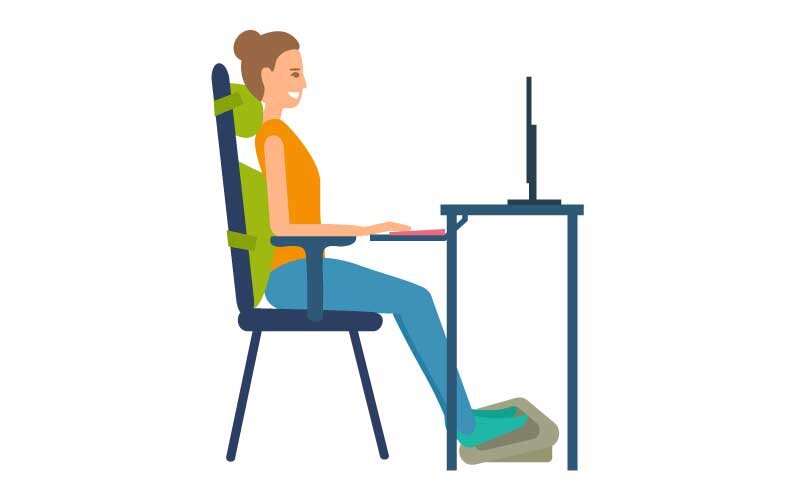Chair Series: Footrest
Take into consideration how long you spend sitting at work, on your commute home, while eating, and when relaxing after a long day in the office and all that time soon adds up. One of the problems with spending so much time sitting is that many people are not sitting correctly. Slouched postures, poorly adjusted chairs, or accessories like monitors and keyboards positioned incorrectly can all contribute to issues in the workplace.
Myth Busting: An Unusual but Effective Solution
Most common aches and pains we develop during the working day is caused by unhealthy habits and misuse of muscles. Many of the ergonomic equipment today is designed to reduce the amount of time spent in a poor posture, but often one of the most crucial pieces of equipment - the footrest, is overlooked. Most people think foot rest, they think its only for people who can’t reach the floor. This is untrue. A foot rest helps to unload pressures in the body and maintain better positioning, no matter you height. When I think foot rest, I think back and hip issues!
How do I know if I need a Footrest?
One of the easiest ways to know whether you need a footrest comes when you set your chair to the correct height. Ideally when adjusting the seat height your shoulders should be relaxed with your arms parallel with the table, ie. elbows at a 90o angle, when resting on the desk or when using the keyboard. If you have done all this and your feet are not resting comfortably on the floor well then you will require a footrest. If your feet to not rest on the floor this will increase the pressure felt on the back of your legs and encourage you to slouch on the chair or perch forward away from the backrest. Most people think, will I not just lower my chair? But if you do that, then you will offset your shoulder, wrists, neck and mid back. It is much easier to bring the “floor” to you (in the form of a foot rest) then to lower you chair!
Foot Rest can Improve your Posture!
Without proper support or the correct equipment, we tend to slouch in our chairs during the day. This is not our fault. The weight of our legs (to be precise 40% of our body weight), need to be properly supported to stop us sliding forward. When looking to correct this effect what often happens is, we sit upright by extending our backs, ie. too straight. This causes increased stress on our back muscles and when fatigue sets in we fall back into a slouched position. Studies have shown that by tilting your pelvis back rather than extending your mid back, this involves less movement on the lower back and positions us closer to a neutral position. (1) By using a footrest, we can achieve this position, we are better able to maintain it as well and it prevents us from over-extending the rest of the back.
Issues with Circulation?
Not only is a footrest great for reducing the pressure on the back of your legs and improving your posture, they are also great for helping to increase the circulation in your lower legs. Most footrests are designed to allow a more active sitting approach to your day. If you have a footrest with a rocking motion it will encourage constant movement and help increase circulation and reduce swelling and a build up of fluid through lack of movement.
Summary
Reduce pressure on legs
Encourages better posture
Increased support for all users
Increased lower leg blood flow
Increase in active sitting (reduce static positions)
Click/Tap For References ↓
- Castanharo, R., Duarte, M. & McGill S. (2014) Corrective sitting strategies: An examination of muscle activity and spine loading. J Electromyography & Kinesiology. 24(1): 114-9

